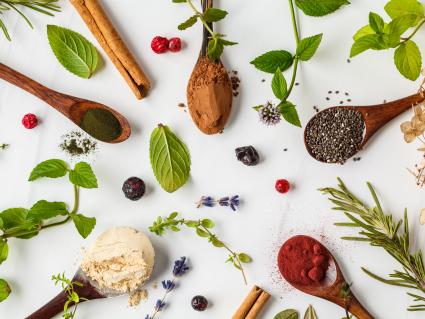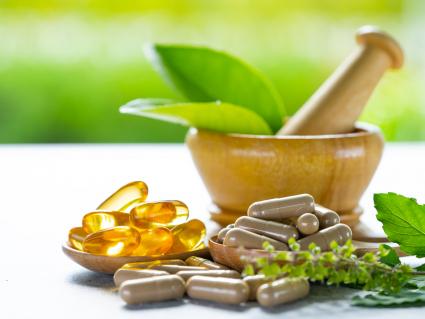Fall into Wellness: Prepare for a Healthy Seasonal Transition

Using the seasonal change to reconnect with nature.
We are fortunate to live in an area of the country where seasonal transitions dramatically enrich and guide our relationship with nature. It may not always seem like a gift in the middle of a long, cold, snowy northeastern winter, but the seasons provide a rich opportunity to relate our environment to our health. As we enjoy these last warm, bright weeks of summer, it’s a good time to contemplate and prepare to transition into the cool, colorful beauty of fall that begins next month.
As many are aware, fall and winter bring with them greater assaults on our immune system. As colder weather forces us to spend more time indoors, we are more readily and frequently exposed to circulating bacteria, fungi and viruses that can cause illness. At the same time, declining sun exposure, including both duration and intensity, contribute to lower Vitamin D levels that can dampen immune function. In addition, decreased intake of fresh vegetables and fruits as seasonal produce availability wanes over the winter can lower body levels of numerous immune supportive vitamins and minerals. Along with microbial hazards, fall is a particularly triggering time for many seasonal allergy sufferers. Environmental allergens such as ragweed, molds, and dust mites increase with fall weather conditions, triggering an overactive immune response in those who are sensitive.
Fortunately, with some planning, nature has provided us with many tools to prepare our bodies to thrive during the fall and winter months. Starting in October and through to April, we can increase our intake of key immune nutrients, such as Vitamins A, C, D, and the mineral zinc, by supplementing with them daily as well as with immune enhancing herbs and mushrooms like astragalus, elderberry, andrographis and others. If the body is prepared and capable of generating a healthy immune response, exposure to microbes need not lead to illness. For allergy sufferers, daily nasal lavage with a neti pot during the fall months can dramatically decrease their symptoms by washing away inhaled allergens. There are also many nutrients and herbs that can promote immune tolerance through anti-histamine and other modulating effects. Best taken daily, starting in late August or early September before fall allergy season is in full swing, these include quercetin, bromelain, nettles, and Vitamin C, among others.
Moving into fall from summer is a good time to consider a simple detox plan to enhance overall wellness by decreasing the body’s toxic load. It is also a great way to establish a practice that acknowledges and prepares the body for a seasonal transition. Late September or early October is an ideal time to start, and the most benefit will be gained from adhering to changes for at least 14-21 days. Some of the many positives you can expect to experience include increased energy, better sleep, improved digestion, fewer headaches, clearer skin and more. There are many approaches to detox, with a multitude of supplements, herbs, homeopathics and techniques to support it. A consultation with a health professional at the Stram Center can provide you with a more comprehensive and individualized protocol, but there a few basic things you can do to support the process on your own.
-Diet: Eliminate a few simple foods from your diet, including caffeine, alcohol, sugar and processed foods. To take it even further, generally inflammatory foods like dairy, wheat, corn and red meat can also be removed. Increase consumption of foods that support liver function, such as dark leafy greens, cabbage, brussels sprouts, beets and parsley. Choose organic varieties whenever possible – check out the Environmental Working Group’s Dirty Dozen and Clean Fifteen lists for guidance.
-Hydration: Drink half your body weight in ounces of water daily. Urine should be a light yellow color; darker yellow suggests dehydration.
-Movement: Get outside and break a sweat while the sun still shines on crisp fall days and walk, run, hike, bike, etc. to promote elimination via sweating and increased lymphatic circulation.
-Sleep: Plan to get a solid 7-8 hours every night. Sleep is a critical time for the body to heal and detoxify. So, practice good sleep hygiene by going to bed between 10-11pm, sleeping in a completely dark room and turning off electronics at least an hour prior to bedtime.
Eating seasonally is another way to embrace the transition into fall, the harvest season. In the northeast, with cooler days and nights comes an increased array of vegetables and a decreased variety of fruits. This provides a natural move toward more cooked foods in the fall and winter months, which provide our body with more easily digested foods as our internal digestive fire tends to decrease with falling temperatures. Many of the vegetables and fruits available at this time are rich in the immune supportive and anti-allergy nutrients mentioned earlier which align with our body’s seasonal health needs. In addition many fall fruits and vegetables are hardy in nature, some lasting through to the first frost and lending themselves well to canning, drying or freezing for consumption through the winter. Check out local farmer’s markets and farm stands for a nice selection of regional fall produce.
Lastly, the waning sunlight, cooler temperatures and shorter days of fall gently signal us to look inward. Summer encourages bustling activity – festivals, vacations, picnics, social gatherings, etc, – and as such, our experience often emphasizes an outward flow of attention and energy. In contrast the fall and winter provide greater opportunity for introspection. A powerful way to embrace this shift is to begin or deepen a personal mindfulness practice. Mindfulness refers to simply existing in the present through awareness of all five senses and any internal thoughts or feelings in each moment. There are many ways to enhance this practice, including meditation, journaling, yoga, gratitude, breathing techniques, nature walks and many more. Enhancing both physical as well as mental-emotional health, cultivating mindfulness can greatly support our overall wellbeing, especially during the contraction of the coming winter season.
Soak up what remains of summer, and prepare for fall, so you are ready and eager to embrace its colorful splendor, abundance, and unique opportunities!





















